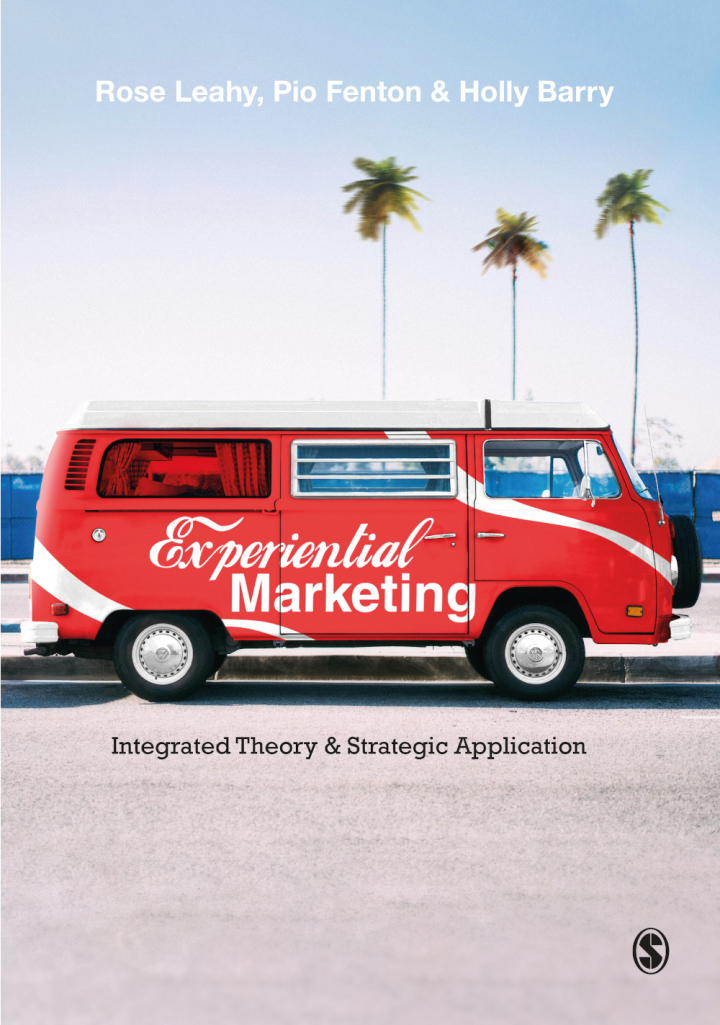
Experiential Marketing 1st Edition - Integrated Theory & Strategic Application
PUBLISHER: Sage
Trường ĐH, Nhóm, Thư Viện: Gọi 0915920514 để báo giá eBook hosting trên Vital Source hoặc mua Sách In
Tiếp thị trải nghiệmLý thuyết tích hợp & ứng dụng chiến lượcVào thời điểm mà khả năng hiển thị thương hiệu gần như vô hạn và quảng cáo ngày càng được cá nhân hóa hơn bao giờ hết, làm thế nào để thương hiệu nổi bật mà vẫn thu hút được sự chú ý của bạn? Trước đây đã phải vật lộn để khẳng định uy tín của mình về mặt lý thuyết và giữa các nhà điều hành, tiếp thị trải nghiệm hiện đã trở thành một đặc điểm cốt lõi của hầu hết các hoạt động tiếp thị. Cuốn sách này đặt lại quan điểm về trải nghiệm như một phương tiện hiệu quả để đạt được các mục tiêu tiếp thị của công ty theo cách có cấu trúc, có mục đích và có thể đo lường được. Với hơn 40 ví dụ từ các thương hiệu như Netflix, Lego, Coca Cola, Vans, Asics và Sweaty Betty, cuốn sách này xem xét lại lý thuyết xung quanh loại hình tiếp thị này và chỉ cho bạn cách tích hợp tốt hơn tiếp thị trải nghiệm với các lĩnh vực truyền thông tiếp thị khác. Mô hình triển khai được cung cấp sẽ giúp bạn phát triển các chiến dịch mạnh mẽ nhằm hỗ trợ các mục tiêu tiếp thị tổng thể và cung cấp sự rõ ràng về tính hiệu quả cho các nhà điều hành thông qua cơ chế có tên là Lợi nhuận trên Trải nghiệm Tích hợp (ROIE). Tiếp thị trải nghiệm đối mặt với những thách thức mới trong thời kỳ hậu Covid – cuốn sách này sẽ là cơ sở để vượt qua những thách thức đó và mang đến cơ hội cho các nhà tiếp thị ở khắp mọi nơi. Rose Leahy là giảng viên và giám sát nghiên cứu trong lĩnh vực tiếp thị tại Đại học Công nghệ Munster, Ireland. Pio Fenton là Trưởng khoa Tiếp thị và Kinh doanh Quốc tế tại Đại học Munster Technologicla, Ireland. Holly Barry là Nhà chiến lược thương hiệu tại Barry Group, một công ty phân phối bán buôn hàng đầu ở Cork, Ireland.
- List of Figures and TablesAbout the AuthorsOnline ResourcesAcknowledgements1 The Experiential Marketing EnvironmentChapter OverviewContext: Where are we?Covid-19 and its ImplicationsExperiential Marketing in a Post-Pandemic WorldObjectives of the BookBook StructureReferences and Further Reading2 Origins of Experiential MarketingChapter OverviewEvolution of Experiential Marketing1960s to the Present DayThe Consumer: Morphing from Rational to Emotional and the Need for ‘More’Experiential vs Entertainment Economy: Unleashing More Value within Consumption BehaviourExperience and Experiential Marketing: Introducing Components and Key TheoriesExperiential MarketingConclusion and SummaryMain Takeaways from
- Chapter 2Concluding QuestionsReferences and Further Reading3 The Experiential ConceptChapter OverviewWhat Do We Mean by Experience?Experiential Marketing… What Does it Really Mean?The Performance Perspective of Experiential MarketingThe Emotions/Senses Perspective of Experiential MarketingThe Experiential ‘Add’ to MarketingExperiential ValueConclusion and SummaryMain Takeaways from
- Chapter 3Concluding QuestionsReferences and Further Reading4 Experiences and Relationship MarketingChapter OverviewThe Relationship Marketing ConceptBusiness-to-Business Marketing RelationshipsEngagements and Interactions for Relationship DevelopmentConsumer–Brand RelationshipsBrand Relationships and Marketplace CulturesExperiential Marketing in Building Consumer–Brand RelationshipsConclusion and SummaryMain Takeaways from
- Chapter 4Concluding QuestionsReferences and Further Reading5 Brand Management and Experiential MarketingChapter OverviewThe Role of Experiential Marketing in Managing a BrandHow to Design Experiences that Connect with More Traditional Brand Management and Communication StrategiesThe Importance of Memory Structures and Recall when Implementing Experiential MarketingBuilding Brand Equity through Experiential MarketingConclusion and SummaryMain Takeaways from
- Chapter 5Concluding QuestionsReferences and Further Reading6 Experiential Marketing and Digital MarketingChapter OverviewViral Marketing and Word-of-Mouth MarketingDigital Experience: Bringing Consumers to Experiences in New WaysSocial Media and Strategic AmplificationCritical Success Factors of the Amplification StrategyConclusion and SummaryMain Takeaways from
- Chapter 6Concluding QuestionsReferences and Further Reading7 Experiential Marketing Implementation ModelChapter OverviewThe Experiential Marketing Implementation ModelStep 1: Customer SegmentationStep 2: Setting the Campaign ObjectivesStep 3: Setting the Campaign KPIsStep 4: Allocating the Campaign BudgetStep 5: Setting the Timeline and Amplification StrategyStep 6: Calculating and Evaluating Return on Integrated ExperienceConclusion and SummaryMain Takeaways from
- Chapter 7Concluding QuestionsReferences and Further Reading8 Integrating Experiential Marketing with the Communications StrategyChapter OverviewIntegrating Experiential Marketing with Traditional MarketingUtilising Experiential Marketing Outside the PlanIntegrated Marketing Communications FrameworkMeasuring an Integrated ApproachConclusion and SummaryMain Takeaways from
- Chapter 8Concluding QuestionsReferences and Further Reading9 Budgeting for Experiential MarketingChapter OverviewMethods of Allocating Budgetary Funds to MarketingBudgeting for an Integrated Marketing CampaignBreakdown of the Budget Allocation to Experiential MarketingJustifying the Experiential Marketing Budget AllocationConclusion and SummaryMain Takeaways for
- Chapter 9Concluding QuestionsReferences and Further Reading10 Measuring the Return of Experiential MarketingChapter OverviewBackground and ContextMeasuring the Return on ExperienceReturn on Integrated ExperienceConclusion and SummaryMain Takeaways from
- Chapter 10Concluding QuestionsReferences and Further Reading11 Critical Success Factors for Experiential MarketingChapter OverviewCase Study: Race and Taste FestivalCritical Factors to the Success of Barry Group and Race and Taste CollaborationConclusion and SummaryMain Takeaways for
- Chapter 11Concluding QuestionsReferences and Further Reading12 Experiential Marketing for the 21st CenturyChapter OverviewThe Changing Global LandscapePlanning for Experiential Marketing: An Overview of Key ConceptsDeployment and Management of Experiential MarketingEvaluation of Experiential MarketingThe Future of Experiential MarketingAcademic ConsiderationsConclusion and SummaryMain Takeaways from
- Chapter 12Concluding QuestionsReferences and Further ReadingIndex















